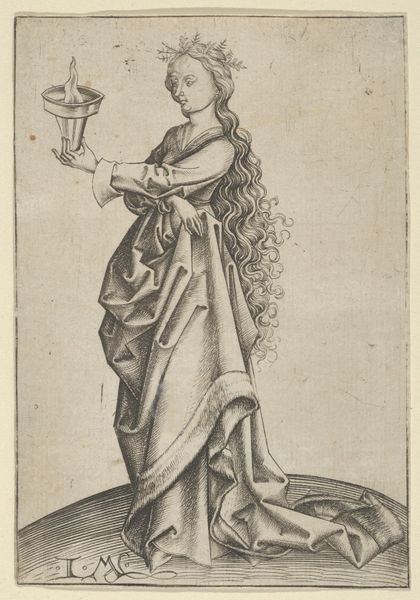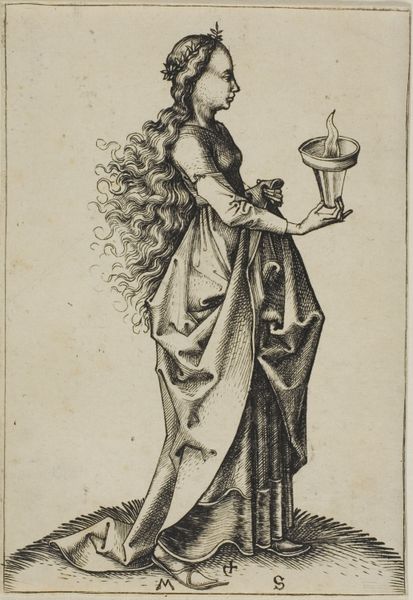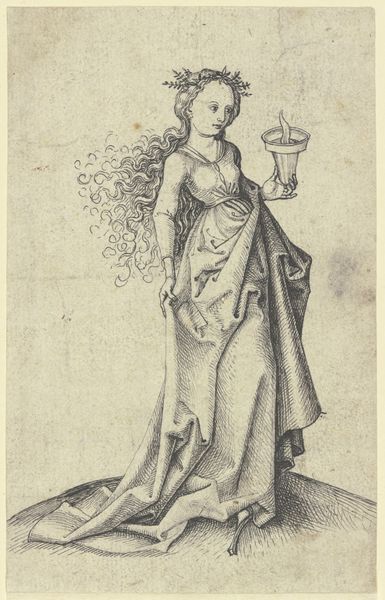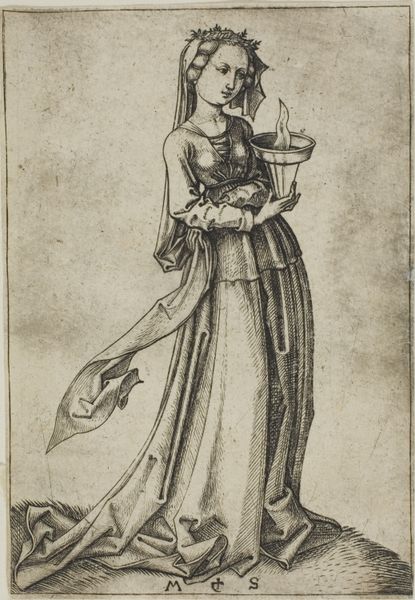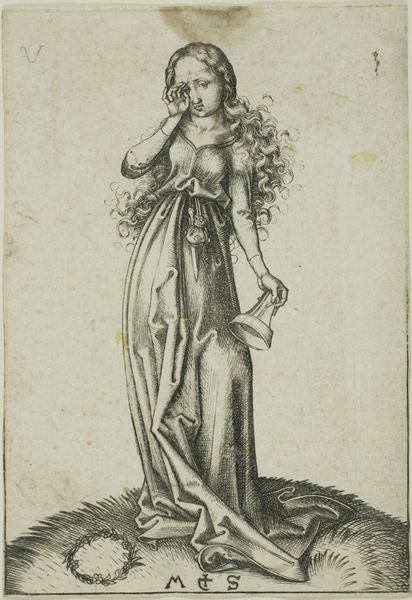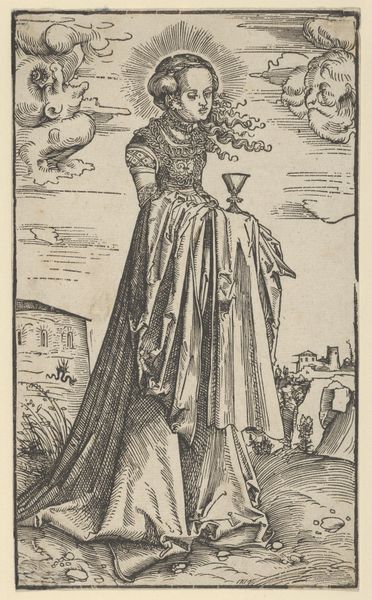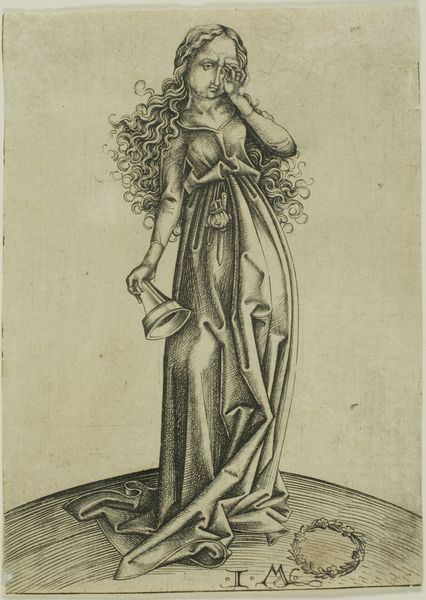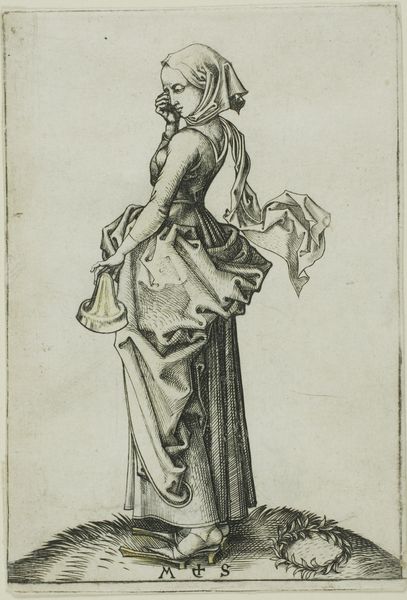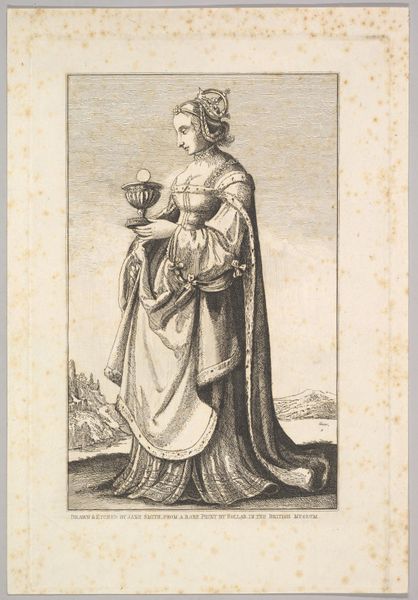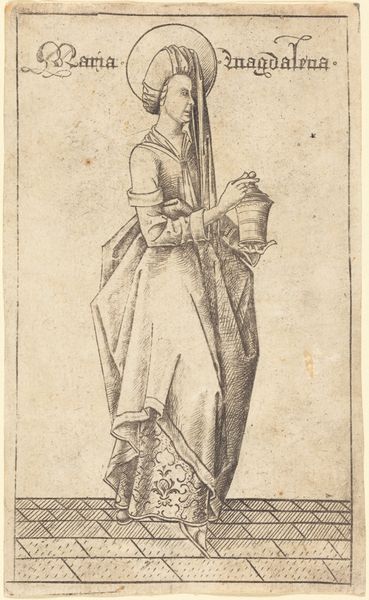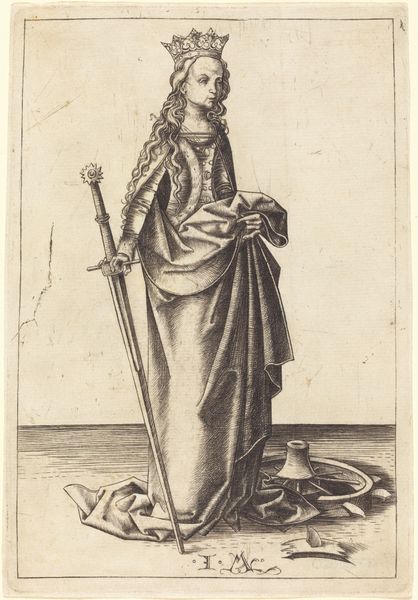
The third wise VirginFrom the Series 'The Five Wise and Five Foolish Virgins' c. 1475
0:00
0:00
drawing, engraving
#
drawing
#
medieval
#
allegory
#
figuration
#
12_15th-century
#
history-painting
#
northern-renaissance
#
engraving
Copyright: Public Domain
Editor: This is Martin Schongauer's "The third wise Virgin" from around 1475, an engraving. There's something quite serene and composed about the figure, even though she's holding a burning lamp. What stands out to you in this piece? Curator: The interesting thing about this work is how it participates in the cultural discourse of its time. Schongauer, working in the late 15th century, reflects anxieties about female virtue and preparedness within a religious framework. This particular virgin, one of the wise ones, highlights the importance of vigilance and readiness, themes heavily promoted by the Church. Think about how this imagery might reinforce certain power structures related to women's roles. Editor: So, it’s not just a beautiful image but a reinforcement of social expectations? Curator: Exactly. The lamp, of course, symbolizes faith and enlightenment, but also constant readiness. Who is considered worthy and able to access that light? The parable implies a strict dichotomy and a potential judgment, especially toward women. I wonder, what kind of judgement we, as viewers, impose in the twenty-first century when we view Schongauer’s image? Editor: That’s a great point. It's easy to look at the image and admire the artistry without considering its impact and the ideas it was promoting. Curator: Precisely. Art is never created in a vacuum. By acknowledging its cultural baggage, we engage in a more meaningful dialogue with both the artwork and its legacy. What this engraving tells me, is not merely a biblical teaching but a deep, and rather biased, historical document. Editor: I'll definitely keep that in mind moving forward! Thanks.
Comments
stadelmuseum about 2 years ago
⋮
The New Testament parable of the Wise and Foolish Virgins revolves around a wedding custom in which ten virgins go out to meet a bridegroom. While some have filled their lamps with oil, the others have forgotten, are unable to light their lamps, and are barred from joining in the celebration as a result. The tale was linked with a warning: be always prepared for the coming of the Lord. Schongauer’s series was quite successful and often copied, and the expressive figures moreover frequently served painters as models.
Join the conversation
Join millions of artists and users on Artera today and experience the ultimate creative platform.
